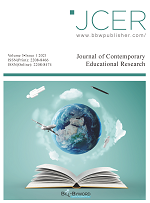Abstract
With the advent of 5G era, it has become an inevitable trend to drive educational modernization with educational informationization. The modern-day education uses science and technology as well as culture in cultivating independent learning as the ultimate goal. However, there are many drawbacks in the system and practical aspects of higher vocational education in which one of it is that the independent learning has been neglected in the learning process. This article analyzed the issues in the autonomous learning of the English language among higher vocational college students and discussed strategies to improve their autonomous learning ability based on informationization to promote bidirectional interaction between teachers and students, cultivate students’ consciousness of lifelong learning, improve teachers’ technical skills, and perfect the development of a connotative system in higher vocational colleges.
References
Opinions of the Ministry of Education on strengthening the construction, application and management of online open courses in colleges and universities. Bulletin of the State Council of the People’s Republic of China, 2015: 48-50.
Xu JF, 2014, Research on the status quo and thinking of Chinese college students’ autonomous learning ability. Language Education, (11).
Kaplan AM, Haenlein M, 2016, Higher education and the digital revolution: about MOOCs, SPOCs, social media, and the Cookie Monster. Business Horizons, 59(4): 441-50.
Zhang E, Zhang W, Jin C, 2018, SPOC-based flipped classroom of college English: construction of an effective learning model. Technology Enhanced Foreign Language Education, 13(1): 37-40.
Han X, Ren F, 2020, On the improvement of vocational college students’ information literacy in the era of “internet +”. Education and Careers, (17): 103-7.
Pang WG, 2003, Theory and strategy of independent learning – learning and teaching, East China Normal University Press, Shanghai.
Gengxing, 2020, SPOC-based hybrid collaborative development model of 333 for pre-service and post-service learners. Education and Careers, (11): 102-6.
